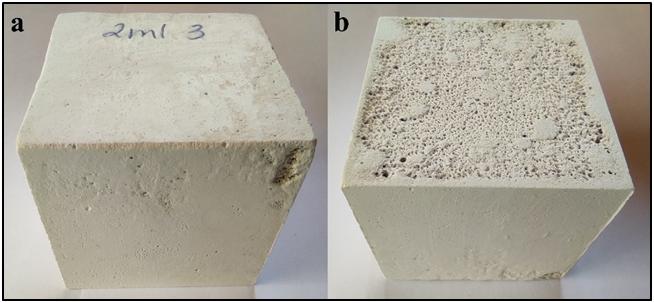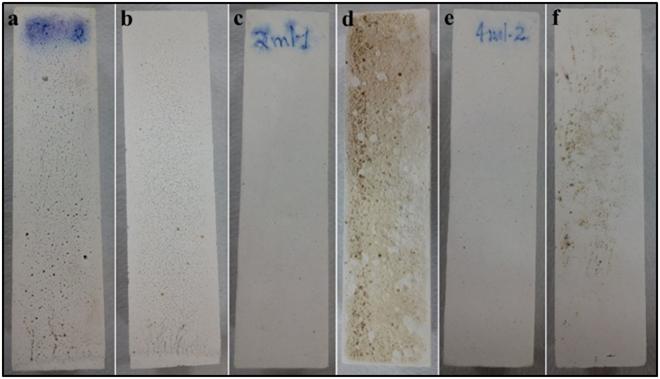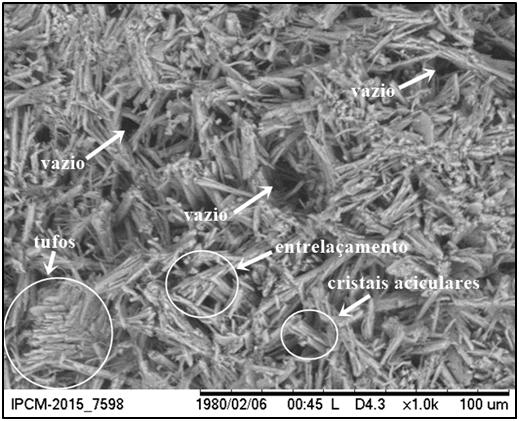Abstract
This paper aims to evaluate the durability of plaster with the addition of water repellent, when subjected to accelerated aging. For this process, plaster and water repellent were used. The water/plaster ratio was set at 0.7 and contents of 0.2% and 0.4% of water repellent were used, in relation to the plaster mass. The prototype plaster (without water repellent) and the plaster containing mass water repellent were evaluated at “zero” age, after 10 and 20 drying and wetting cycles. Tests of hardness, compressive strength, total immersion absorption, capillary absorption and SEM, and EDX analysis were performed. At 20 accelerated aging cycles, there was a reduction in mechanical properties; at the same time, there was considerable reduction in both immersion absorption and capillary absorption in the specimens containing the water repellent, compared to the prototype specimens. Regarding the microstructure, even at 20 cycles, it was possible to identify the presence of water repellent forming a “film” above the plaster crystals, with a higher percentage of water repellent being identified in the most superficial region of the specimen. These results show the effectiveness of water repellent as a protective barrier against accelerated aging.
Keywords:
Plaster; Calcium sulfate hemihydrate; Silane; Siloxane; Durability

 Thumbnail
Thumbnail
 Thumbnail
Thumbnail
 Thumbnail
Thumbnail
 Thumbnail
Thumbnail
 Thumbnail
Thumbnail
 Thumbnail
Thumbnail
 Thumbnail
Thumbnail
 Thumbnail
Thumbnail
 Thumbnail
Thumbnail
 Thumbnail
Thumbnail
 Thumbnail
Thumbnail
 Thumbnail
Thumbnail
 Thumbnail
Thumbnail
 Thumbnail
Thumbnail
 Thumbnail
Thumbnail














